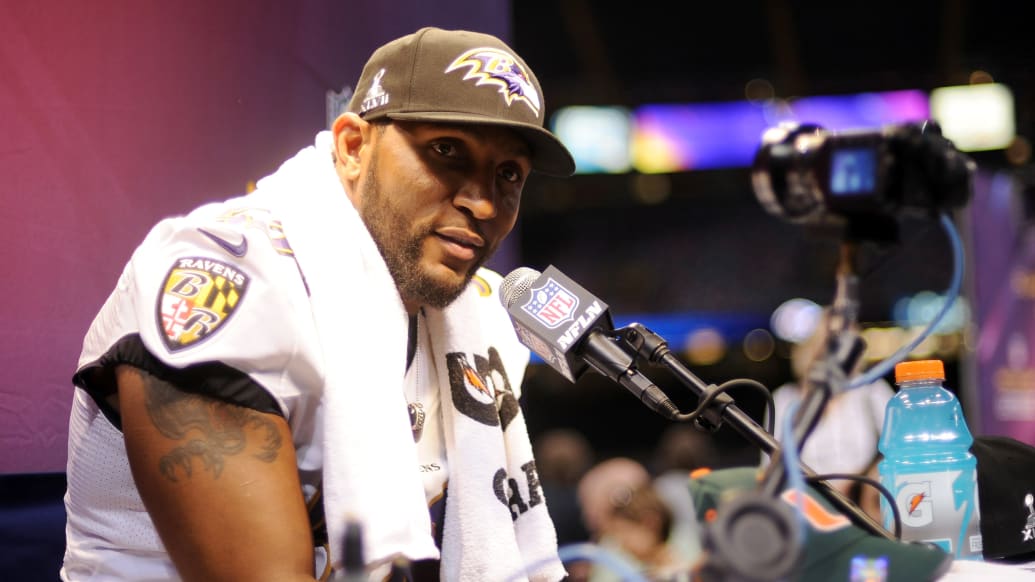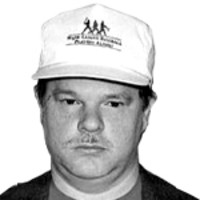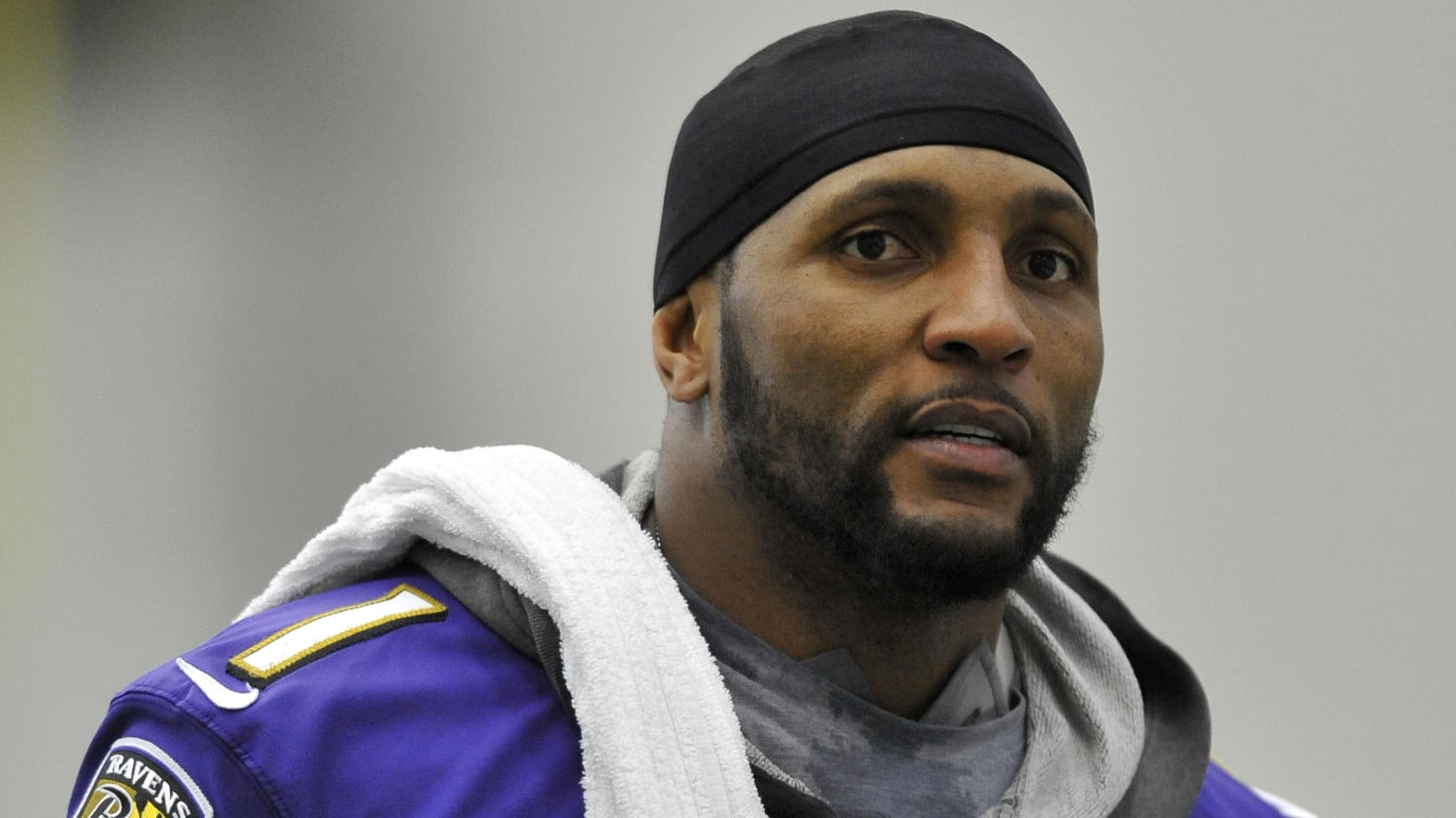
The Tuesday of Super Bowl week is the bland horror known as Media Day, when players and coaches sit in front of microphones and offer reporters much the same homilies about “motivation” and “teamwork” they’ve recited since the pre-season.
At 12:15 pm, Ray Lewis of the Baltimore Ravens, the great linebacker who’s retiring after the game and the only person on either team with anything worth talking about, sat down for his 15 minutes. Dressed like a GQ cover, Lewis smiled and stroked a couple of softballs from the press about the upcoming game being the crown jewel in a great career and then left the stage. The elephant in the room—the two men stabbed to death outside a nightclub just hours after the Super Bowl in Atlanta—left with him, unmentioned.
Despite Lance Armstrong and Manti Te’o, Kobe Bryant and Ben Roethlisberger and Alex Rodriguez and on down the line to Ty Cobb, in sports everything is forgiven winners. Lewis, who’s regularly referred to as “the spiritual leader of the Baltimore Ravens” and is gunning for the second Super Bowl ring of his illustrious career, is regarded by just about every football analyst as a first-ballot hall of famer and by many as the greatest ever to play the position. On television, the entire NFL season seemed to be one long tribute to him: Lewis dancing off the field at the end of a Ravens victory; Lewis gazing upward toward the head coach in the sky; Lewis’s charity work in Baltimore; Lewis accepting congratulations from quarterback and league icon Peyton Manning, baby son at his feet, after the Ravens upset the Broncos earlier in the playoffs. Delirious fans hail him as the most popular athlete in Baltimore history—the town where Johnny Unitas became the first household name in pro football history and Cal Ripken, Jr. became the most respected baseball player of his generation.
And now, the National Football League—which fined Lewis a quarter of a million dollars in 2001 for what then-commissioner Paul Tagliabue called his “unlawful obstruction related to a very serious occurrence, [the] double homicide” of 24-year-old Richard Lollar and 21-year-old Jacinth Baker—is rumored to be considering the gridiron great as an adviser to NFL Commissioner Roger Goodell after he steps off the playing field for the final time on Sunday.
Goodell, the so-called football czar who has made himself hugely unpopular with the players for hiring scab referees, freely flinging about fines for borderline hits, and generally portraying himself as the game’s stern but fair father figure, called Lewis “a tremendous voice of reason” earlier this year:
“He’s someone that has a unique pulse of the players and that's helpful to me. That perspective is important to hear, and he would always share that with me whether he called or I called him ... He means a great deal to this commissioner, and I could tell you that I will always seek out his input."
This is the same Lewis who had been publicly accused, although never convicted, of off-field violence in several previous incidents, including two involving separate women who were pregnant with his child while he was at the University of Miami (one woman declined to press charges after the police arrived, while the other reportedly complained that the police had hindered the investigation, which was eventually dropped after the Miami-Dade state attorney's office concluded it lacked sufficient evidence to pursue the case).
The details of the fatal morning nearly 13 years ago are sparse. After a Super Bowl party following the St. Louis Rams victory over the Tennessee Titans in Atlanta, Lewis and some pals, including his longtime friends Reginald Oakley and Joseph Sweeting, exchanged hostile words with another group of young men, including Lollar and Baker outside of a night club, the Cobalt Lounge, according to court papers. There was a brief altercation and Baker and Lollar were stabbed to death. No one else was known to be hurt. Lewis and his entourage quickly piled into his limousine and drove off. The group of men left behind then fired a gun at the limo, leaving five holes in it and blowing out one of its tires.
The murder charges against Lewis were eventually dropped, and he’s maintained his innocence, with his lawyers at the time calling him a “peacemaker” who aimed to “break up the fight.”
In a recent apologia for Lewis, Eric Thomas wrote for CBS sports that “Ray Lewis was an eventual witness in a murder case. He was charged with the murder of Jacinth Baker and Richard Lollar along with his two companions… eventfully the case ended with the defendants acquitted for reasons of self defense. In the eyes of the court, no murder took place.”
Lewis, writes Thomas, “wasn’t involved in the fight that killed the two men.” But how does he know that? The driver of the limo first told investigators that he definitely saw Lewis strike one of the victims; later, when pressed by the DA, he recanted. Lewis’s story was that he didn’t see a stabbing and was only acting as “a peace maker.” The investigation, however, revealed that Baker’s blood was found in Lewis’s limo. A white suit Lewis was wearing at the Super Bowl and the party was never found; one woman who was in the limo testified that she saw another passenger dump a white hotel laundry bag into a garbage bin outside a fast food restaurant. And one of the men in the limo testified that Lewis told everyone in the car to “keep their mouth shut and don’t say nothing.”
The case against Lewis, Oakley, and Sweeting fell apart when witnesses recanted their testimony, or claimed not to have seen clearly what happened. Lewis was first charged with two counts of murder, but after cutting a deal with prosecutors he testified against his friends, swearing that Oakley, Sweeting, and another man who was not identified had purchased knives at a sporting goods store the day before—but he never directly linked his two friends to the killings and both men were acquitted of murder and assault charges.
The only man convicted of any charges in the case was Lewis, who pled guilty to one count of misdemeanor obstruction of justice (for telling the others in his limo to keep quiet about what had happened), and got off with a year’s probation. The NFL fined him a quarter of a million dollars but did not suspend him from playing the next season.
After settling separate civil suits with the families of the two victims, reportedly more than $1 million in one case and an undisclosed amount in the other, Lewis has been fond of calling himself “a changed man”—but he’s never come clean on exactly what he has changed from. Sympathetic reporters have related that he has become a good father who spends quality time with his six children. Many don’t get around to mentioning their four different mothers. And two well-regarded players who asked to remain anonymous out of fear of offending the league called Lewis, who placed second in a player poll this year asking who was the league’s “most violent, dangerous player,” one of the sport’s dirtiest players, a consummate cheap-shot artist.
Lewis has mostly stopped talking about the murders except occasional remarks like one, speaking in church and quoted in Sports Illustrated about what hostile fans shout at him: “everything from 'Murderer,'… everything from 'N----r.' It’s a clever bit of word association: If you accuse him of being the first, you’re guilty by association of meaning the second. More often, though, he’s avoided the topic or limited himself to platitudes, the “teamwork” and “motivation” of talking about two men stabbed and left to die.
In 2010 he told the Baltimore Sun, “I’m telling you, no day leaves this earth without me asking God to ease the pain of anybody who was affected by that whole ordeal.” Earlier this week he said he “truly forgive[s]” the wife of a New England Patriots player who posted to her Facebook page (and later took down the post and apologized for it) about the murders, and his complicated family. “Sometimes people just say silly stuff and they say it out of emotion. Sometimes, you need to let the game take care of the game.”
And the game, at least according to Eric Thomas, was why Lewis stayed out of that fateful fight in Atlanta: “Not for some moral or noble reason. He wanted to avoid the conflict because he was concerned it might hurt his NFL career. Throughout the process, Lewis seemed consumed with protecting his then-burgeoning NFL superstar status. He made them promise silence in the limo afterward and lied to the police the morning after. He flipped on his buddies to avoid scrutiny.” Judging from the reaction of Commissioner Goodell and the NFL establishment, he’s indeed avoided that scrutiny.
No matter what the future holds for Ray Lewis, whether or not the investigation is ever reopened or anyone comes forward with new evidence, one thing is for certain: the deaths of Lollar and Baker are never going to be far from any discussion of Lewis, no matter how many Christmas toys he buys or motivational speaking engagements he makes. In a few years, his plaque will hang in the Pro Football Hall of Fame in Canton, Ohio, just 18½ miles from the cemetery in Akron where Baker and Lollar are buried.
(A point after: On Tuesday morning Sports Illustrated announced that their Feb. 4 issue will feature a story on a company whose owners claim that Lewis used a substance banned by the NFL while recovering from a torn triceps in October. Lewis promptly denied the allegation, which could bring down the image carefully built up by Lewis over the past 13 years. American sports fans can forgive violence, but they’re merciless on the subject of performance-enhancing drugs.)

